Translation, role of T3 W1
1/8
There's no tags or description
Looks like no tags are added yet.
Name | Mastery | Learn | Test | Matching | Spaced |
|---|
No study sessions yet.
9 Terms
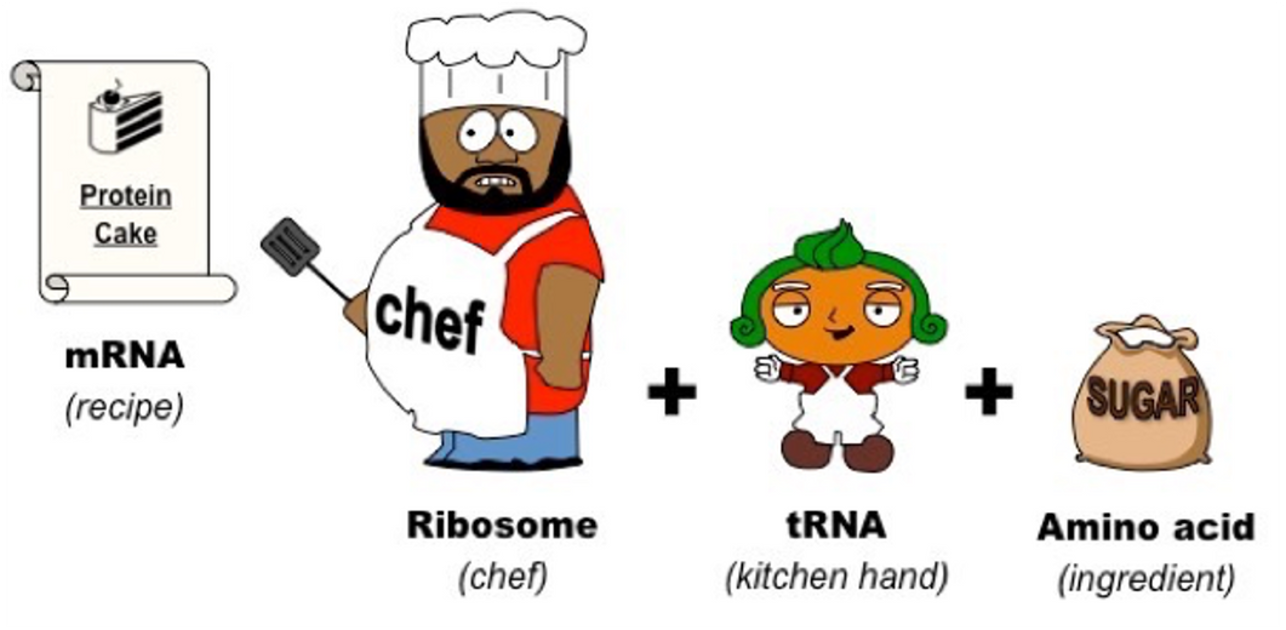
Translation
•mRNA ⟶ polypeptide chain
•A process occurring in the ribosomes and is involved in protein synthesis by which the coded sequence on a mRNA molecule specifies the sequence of amino acids to form a polypeptide chain; i.e. the mRNA sequence is translated into the language of the proteins (amino acids).
•Each step of translation requires ATP & enzymes.
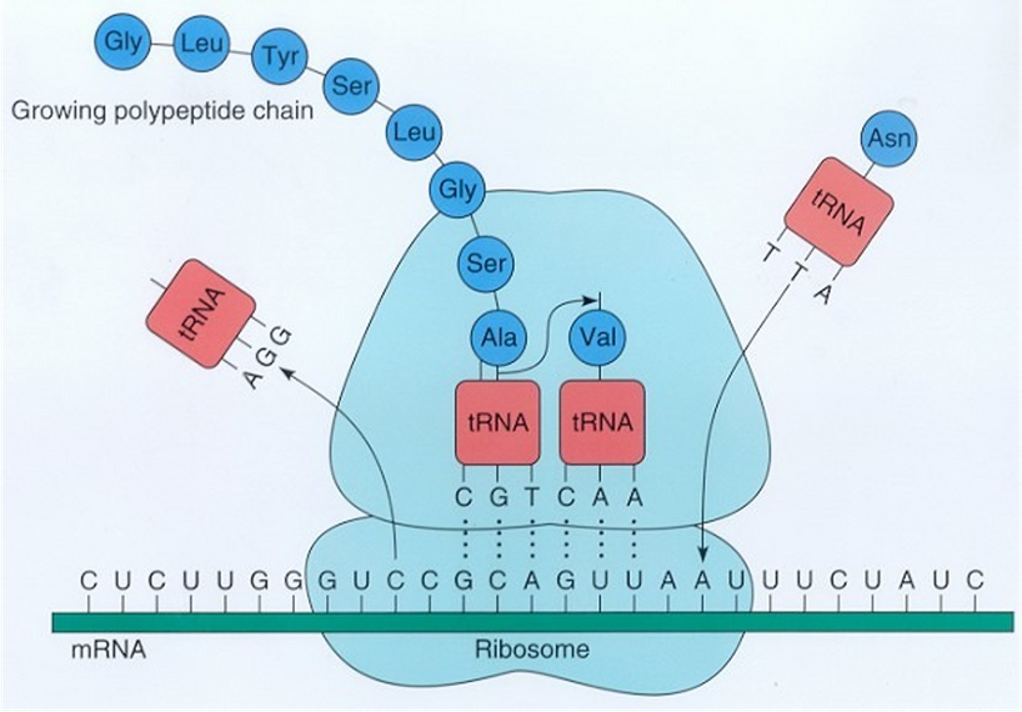
Difference between free ribosomes and bound ones
•Free ribosomes (cytoplasm) synthesise proteins mostly for use within the cell.
•Bound ribosomes (RER) synthesise proteins for export (secretion) from the cell or for use in the lysosomes.

Steps for translation
•3 steps of translation:
1.Initiation (start)
2.Elongation (synthesising the polypeptide chain - joining together amino acids)
3.Termination (end)
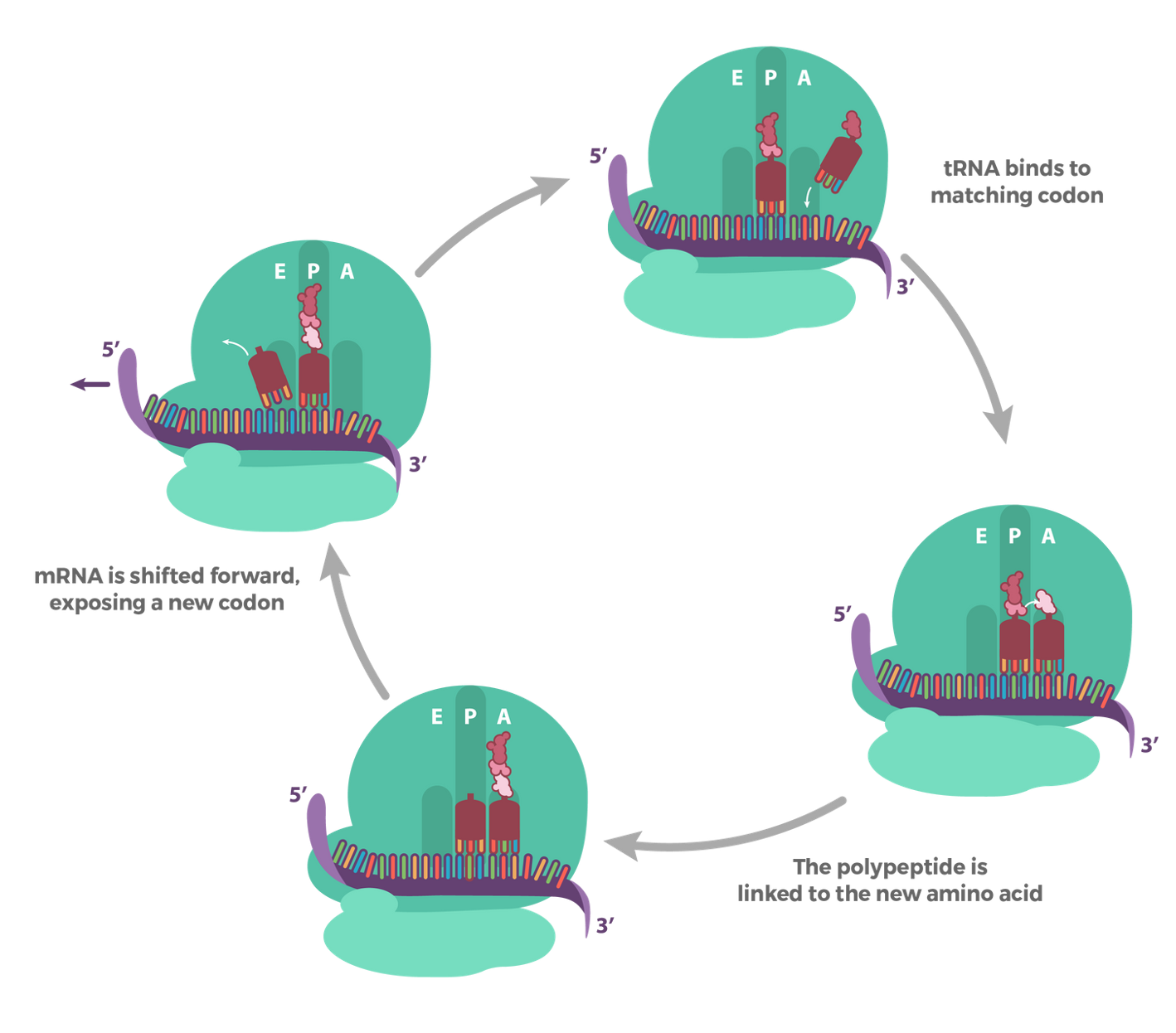
Initiation
•A small ribosomal subunit binds to a special initiator tRNA and the mRNA.
•With the tRNA is place the small ribosomal subunit will scan along the mRNA until it encounters the first start codon (AUG).
•When the tRNA UAC anticodon ‘recognises’ and binds to the start codon on the mRNA, a large ribosomal subunit unites with the small one, forming a functional ribosome.
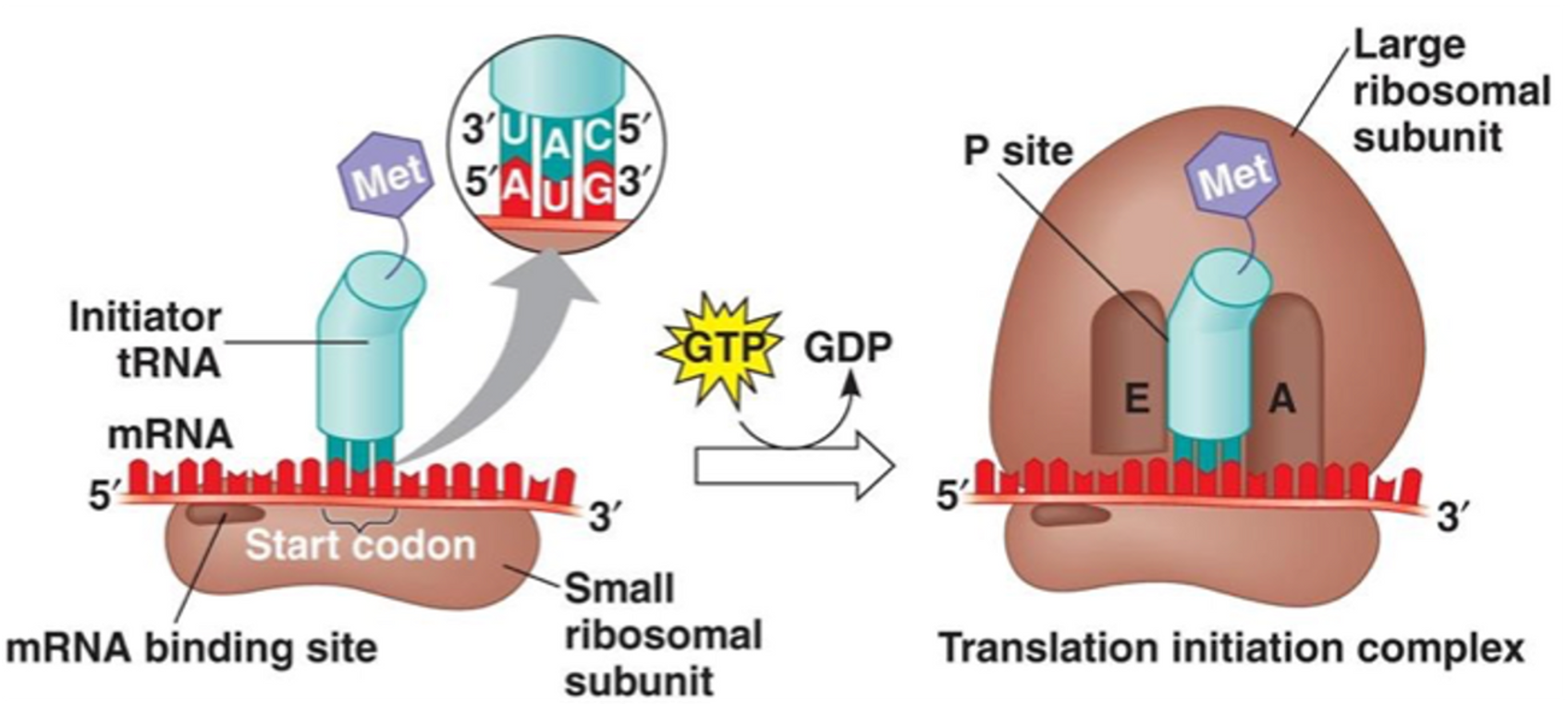
Elongation
•During the three-step cycle of elongation, the ribosomes moves along the mRNA from a 5’ to 3’ direction and one amino acid at a time is added.
•1. Codon recognition
•2. Peptide bond formation
•3. Translocation, or shifting of the ribosome one codon along the mRNA.

Termination
•The mRNA strand is read sequentially unit its last codon, the stop codon enters the A site.
•This ‘tells’ the ribosome that translation of that mRNA is finished.
•The completed polypeptide chain is then released from the ribosome, and the ribosome separates into its two subunits.

Polyribosomes
•A multiple ribosome-mRNA complex efficiently producing many copies of the same protein.
•As the ribosome ‘chugs’ along the mRNA and is progressively ‘read’, the initial portion of the mRNA passes through the ribosome and may attach successively to several other ribosomes, all reading the same message simultaneously and sequentially.
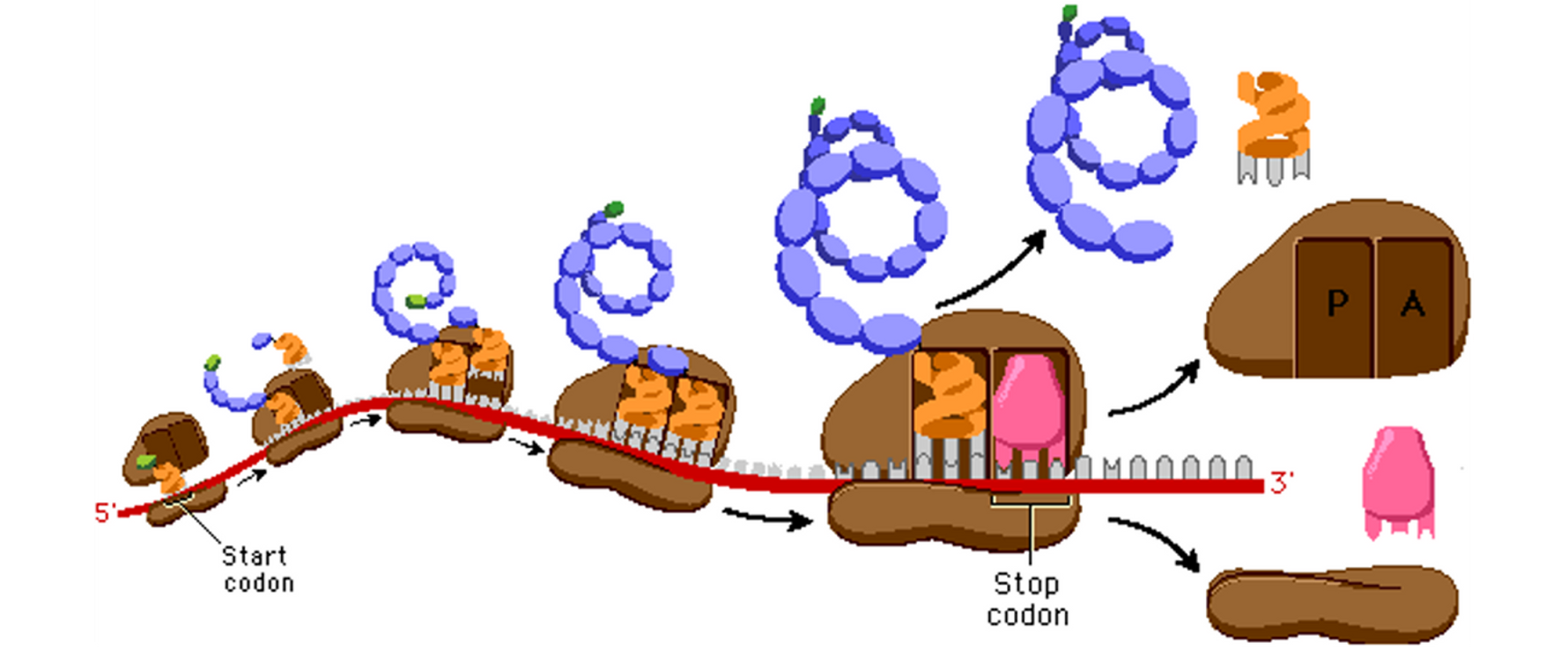
Role of rough endoplasmic reticulum (ER)
•Ribosomes can attach to and detach from the endoplasmic reticulum (ER).
•Once the ribosome attaches to the rough ER, the growing polypeptide chain snakes through the ER membrane pores into the ER.
•The polypeptide chain undergoes folding in the rough ER.
•The polypeptide chain is enclosed within a transport vesicle, which will then make its way to the Golgi body.
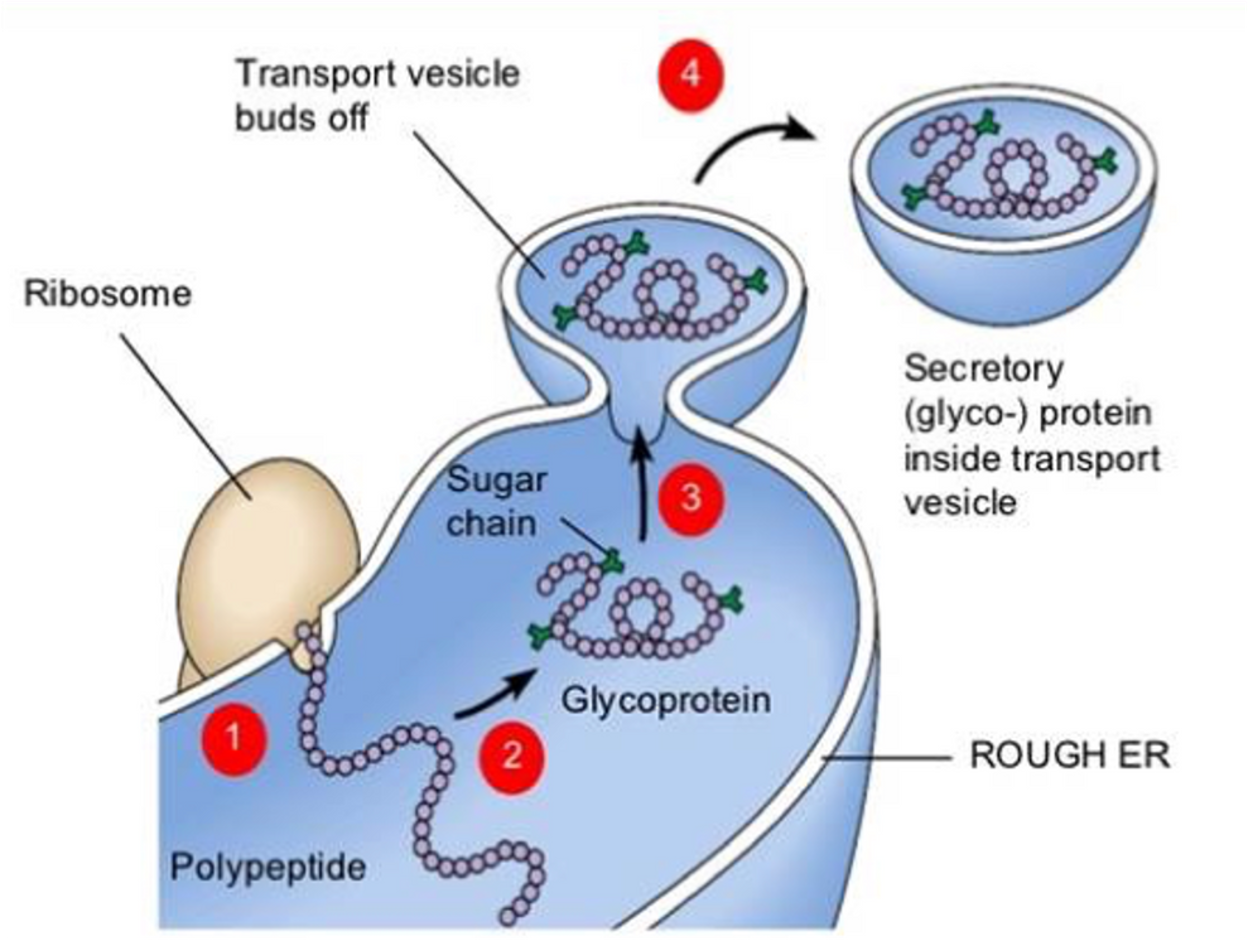
Role of Golgi apparatus (body)
•Vesicles from the RER migrate to the Golgi body.
•Proteins are modified inside the Golgi body and packaged into vesicles:
⚬Proteins for secretion = exocytosis.
⚬Proteins destined for membranes = fuse with the cell membrane.
⚬Digestive enzymes = eventually become lysosomes (or fuse with lysosomes).
